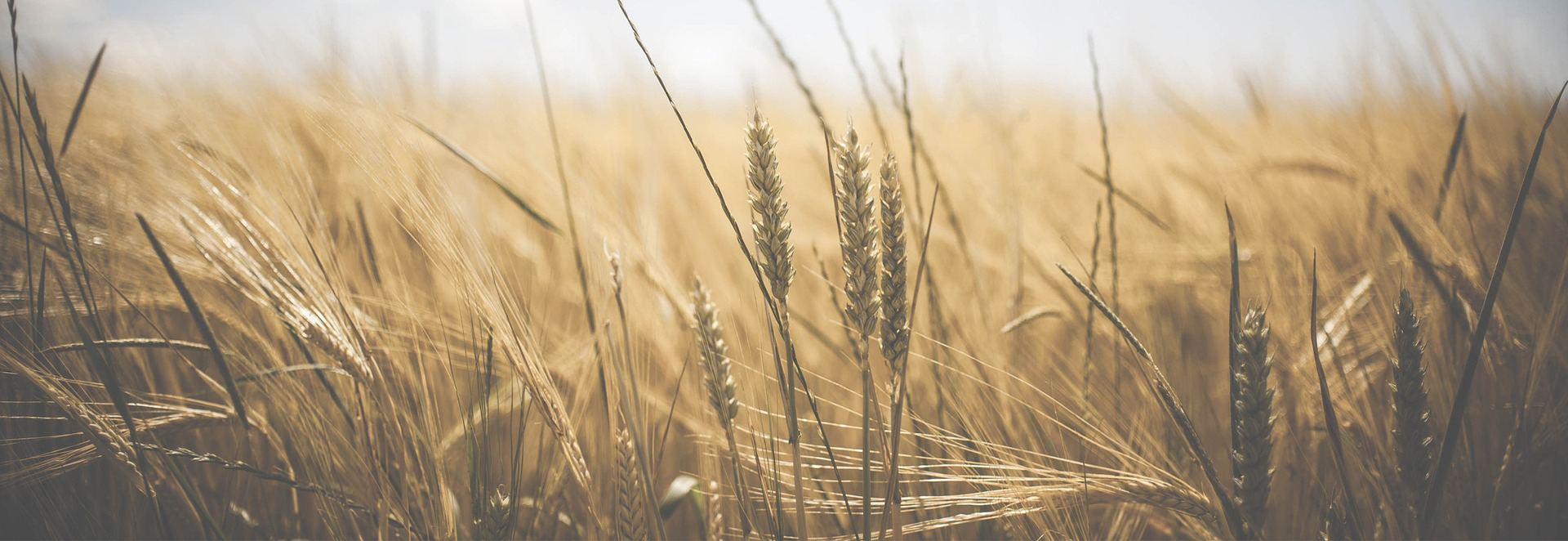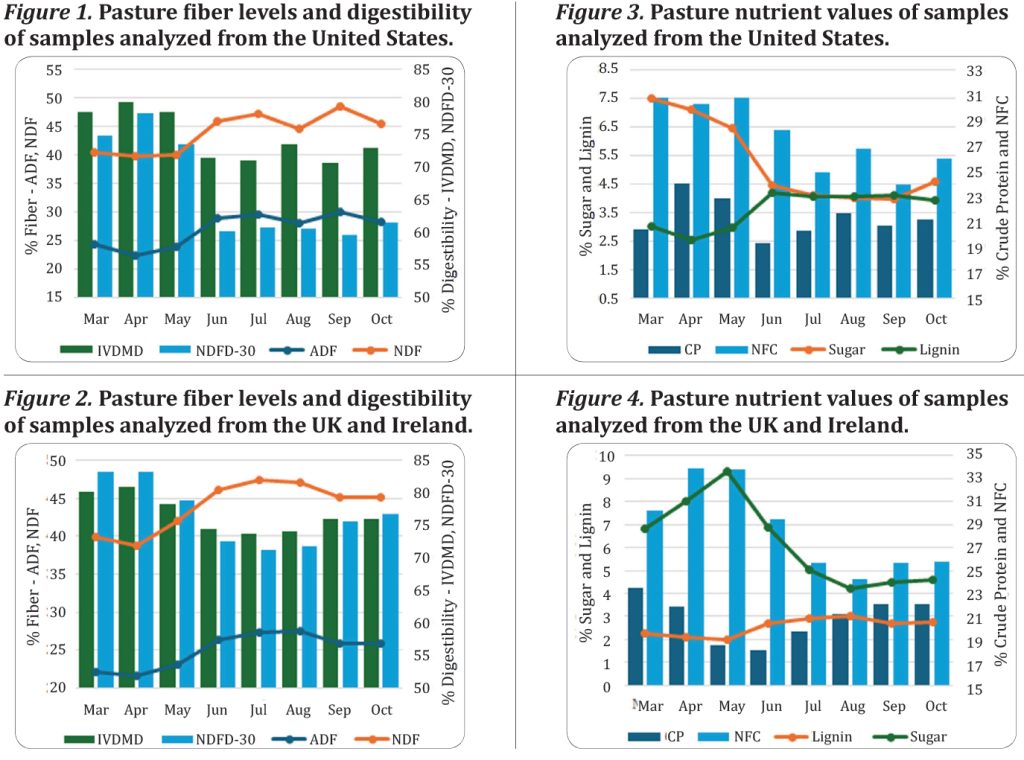
By Grace Thomas, M.Agr.Sc. P.A.S.
The temperate climate in Ireland and the United Kingdom leads to ideal conditions for pasture growth. Due to this, pasture and pasture-based forages make up a large proportion of dairy cow and beef cattle rations. With 95% of Irish dairy cows(1) receiving pasture or grass silage in their diet, and up to 87%(2) of cattle in the UK having access to pasture at some stage in the year, knowing the seasonal variation for analysis over a year is a good starting point when formulating rations. Although grass-based forages do not play as big a role in United States diets for dairy and beef animals, it is still good to get an understanding of grass quality throughout the year. This is especially important with the growing trend towards consumers seeking organic milk(3) and grass-fed beef(4).
Pasture quality is determined by many factors (i.e. season, climate, soil type, geographic location, species, and management). The quality of the pasture increases or decreases as these factors change. However, when looking at pasture analysis over a number of years, there is clearly a seasonal trend in quality. Agri-King’s Analab has a large database of pasture analysis originating from Ireland, the UK, and the US. Figures 1-4 show nutrient and digestibility values from 2018-23 for the months of March to October. This article combines results from Ireland and the UK, while data from the United States includes all states. It’s important to note that different plant species mature at different times. The provided information covers multiple species and illustrates a general trend rather than focusing on individual species.
The quality declines as it grows, with pasture in early spring having high digestibility, protein, and sugar, plus lower fiber levels. This is because the plant at the early stages of growth has a higher portion of leaf and a tender stem. The mature plant is more fibrous and the digestibility of this fiber also decreases. Combined with a higher proportion of stem to leaf, this leads to a lower-quality plant.
When evaluating pasture, the main parameters measured are fiber, digestibility, energy, and protein. Table 1 lists the parameters and how these values change as the plant matures.

Sampling and analyzing fresh pasture is an ideal way to formulate the most accurate rations. However, it is not always possible to do a new analysis every time cattle move onto new pasture. Understanding the trend for pasture during the year — along with lab analysis — can help determine how the pasture will feed. However, how the cattle are performing on the pasture must also be considered.
Some high-quality pastures with high levels of digestibility, low fiber, and high protein content can have a high passage rate. As the feed is passing through the rumen quickly, the animals may not receive the full nutritional value. When feeding large amounts of highly digestible, high-passage rate forages, it is a good idea to supplement the cattle with some longer-fiber forages to help slow down passage rate or to supplement extra energy to the cows to account for the fact the cows are not receiving the full nutrients in the feed.
The weather also needs to be considered when feeding pasture. On hot days, cows may be likely to lie in the shade and only eat when it gets cooler. During cold, wet conditions, dry matter intake will drop, as well, as the cow needs extra energy and time to consume the volume of the wetter grass. There is also an increased risk of soiled grass. In addition, when the weather is cold, cows will group together and eat less. To keep animals performing it may be best to supplement extra feed when weather conditions are not ideal for grazing animals. Speak to your Agri-King representative today to get your pasture analyzed and to help formulate balanced rations for your cows. AK
Sources:
(1) IRISH DAIRYING | GROWING SUSTAINABLY, Grass-fed Irish milk, Donal O’Brien, Brian Moran and Laurence Shalloo, Teagasc, Animal & Grassland Research and Innovation Centre, Moorepark, Fermoy, Co. Cork.
(2) DEFRA Cattle farm practices survey. 2019.
(3) National Agricultural Statistics Service surveys. (2011 and 2021).
(4) Grass-fed Beef Market Analysis North America, APAC, Europe, South America, Middle East and Africa – US, China, Australia, UK, Brazil – Size and Forecast 2024-2028).
